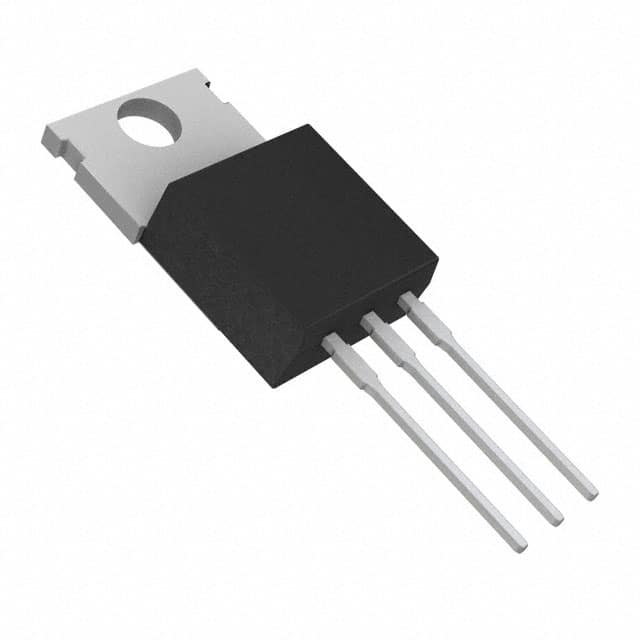Xem thông số kỹ thuật để biết chi tiết sản phẩm.

NTP45N06G - Product Overview and Analysis
Introduction
The NTP45N06G is a power MOSFET belonging to the category of electronic components. This device is widely used in various applications due to its unique characteristics and functional features. In this entry, we will provide an overview of the NTP45N06G, including its basic information, specifications, pin configuration, functional features, advantages and disadvantages, working principles, application field plans, and alternative models.
Basic Information Overview
- Category: Power MOSFET
- Use: The NTP45N06G is commonly used as a switching device in power supply circuits, motor control, and other high-current applications.
- Characteristics: This MOSFET exhibits low on-state resistance, high switching speed, and low gate drive power.
- Package: The NTP45N06G is typically available in a TO-220 package.
- Essence: It serves as a crucial component in electronic circuits for efficient power management.
- Packaging/Quantity: The NTP45N06G is usually packaged individually and sold in quantities suitable for production or prototyping purposes.
Specifications
- Voltage Rating: 60V
- Current Rating: 45A
- On-State Resistance: 0.022 ohms
- Gate Threshold Voltage: 2V
- Operating Temperature Range: -55°C to 175°C
- Package Type: TO-220
Detailed Pin Configuration
The NTP45N06G typically consists of three pins: 1. Gate (G): This pin is used to control the switching action of the MOSFET by applying the appropriate voltage. 2. Drain (D): The main current-carrying terminal where the load is connected. 3. Source (S): Connected to the ground or the lowest voltage level in the circuit.
Functional Features
- Low On-State Resistance: Enables efficient power transfer with minimal loss.
- High Switching Speed: Facilitates rapid switching operations, suitable for high-frequency applications.
- Low Gate Drive Power: Reduces the power required to drive the MOSFET, enhancing overall system efficiency.
Advantages and Disadvantages
Advantages
- Efficient power management
- High reliability and ruggedness
- Suitable for high-current applications
Disadvantages
- Sensitivity to static electricity
- Limited voltage and current ratings compared to some alternatives
Working Principles
The NTP45N06G operates based on the principle of field-effect transistors. When a sufficient voltage is applied to the gate terminal, it creates an electric field that allows current to flow between the drain and source terminals. By controlling the gate voltage, the MOSFET can effectively switch the current flow on and off, making it an essential component in power control circuits.
Detailed Application Field Plans
The NTP45N06G finds extensive use in various applications, including: - Power supply circuits - Motor control systems - DC-DC converters - Audio amplifiers - LED lighting systems
Detailed and Complete Alternative Models
Some alternative models to the NTP45N06G include: - IRF3205 - FQP30N06L - STP55NF06L - IRLB8748
In conclusion, the NTP45N06G power MOSFET offers valuable characteristics and functional features that make it a preferred choice in numerous electronic applications. Its efficient power management capabilities, high reliability, and suitability for high-current applications position it as a key component in modern electronic designs.
Word count: 496
Liệt kê 10 câu hỏi và câu trả lời thường gặp liên quan đến ứng dụng NTP45N06G trong giải pháp kỹ thuật
What is NTP45N06G?
- NTP45N06G is a power MOSFET transistor commonly used in electronic circuits for switching and amplification applications.
What are the key specifications of NTP45N06G?
- The NTP45N06G has a maximum drain-source voltage of 60V, a continuous drain current of 45A, and a low on-resistance.
How can NTP45N06G be used in technical solutions?
- NTP45N06G can be used in various technical solutions such as motor control, power supplies, LED lighting, and automotive applications.
What are the advantages of using NTP45N06G in technical solutions?
- NTP45N06G offers low on-resistance, high current capability, fast switching speed, and efficient power handling, making it suitable for high-performance applications.
Are there any specific considerations when designing with NTP45N06G?
- Designers should consider proper heat sinking, gate drive voltage, and protection circuitry to ensure reliable and safe operation of NTP45N06G in their technical solutions.
Can NTP45N06G be used in automotive applications?
- Yes, NTP45N06G is suitable for automotive applications such as motor control, lighting, and power distribution due to its high current handling capability and robustness.
What are the typical operating temperatures for NTP45N06G?
- NTP45N06G is designed to operate within a temperature range of -55°C to 175°C, making it suitable for a wide range of environments.
Does NTP45N06G require any special driver circuitry?
- NTP45N06G requires a proper gate driver circuit to ensure fast and efficient switching, and to minimize power losses in the application.
Can NTP45N06G be used in high-frequency switching applications?
- Yes, NTP45N06G can be used in high-frequency switching applications due to its fast switching speed and low on-resistance.
Where can I find detailed application notes for using NTP45N06G in technical solutions?
- Detailed application notes for NTP45N06G can be found on the manufacturer's website or in the product datasheet, providing guidance on circuit design, layout, and thermal management.

